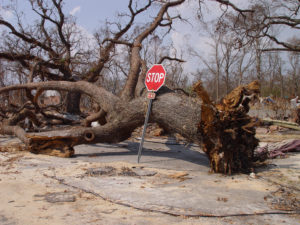 Stay quiet or speak out to your employees about the latest crisis?
Stay quiet or speak out to your employees about the latest crisis?
Yes, this is another dilemma facing CEOs and other leaders in our VUCA (Volatile, Uncertain, Complex and Ambiguous) world.
Some employees say they expect to hear from their leaders whenever something terrible happens inside or outside their organization’s walls.
Others are silent on the subject so it’s not clear whether they’re looking for leaders to act as Chief Consoling Officers or Business as Usual Executives.
“What to do? Can we have criteria about determining whether or not to comment?” queried one of the members of one of my professional associations.
As the co-author of the 2006 book Leading People Through Disasters, I feel the questioner’s pain.
Back then – at the dawn of social media – the criteria for formal communication were much clearer for several reasons.
The number, frequency and type of disasters and tragedies were so much lower and narrower. We could go months, sometimes years, without natural disasters or manmade events, rather than several in a week as we’ve experienced in 2016.
Also, many of us are working differently today. The pace is faster. We’re collaborating more as teams. When we’re apart, we could be working remotely at home, a coffee shop, the gym or another non-traditional space.
Regardless of where we are, thanks to our ever-present devices and social media, we have immediate access to hundreds or even thousands of friends, Facebook posts, Tweets, Instagrams, Snapchats, blogs, external news, etc. And because of these distractions, our work volume and other pressures, we’re often in an overload state-of-mind.
What do we and employees crave from our top leaders around breaking news today? Certainly not restating of the facts as the story develops.
But depending on the incident, we may want details that pertain to our job, custom analysis of the potential impact on us and our organization, and maybe reassurance that our organization’s leaders are monitoring the situation and preparing to take action if needed.
And more than communication from the top, most of us could benefit from some personal connections and informal communication from co-workers we know, like, and trust. That personal contact will demonstrate that kindness, empathy and hope still exist in our VUCA world.
As for the types of incidents merit formal communication, a la interruption, from the leaders?
The criteria my clients and I have been discussing include incidents that:
- Affect the safety of your employees or their family members, such as hurricanes, flooding and other natural disasters.
- Happen in your headquarter city or in a location where you have a number of employees, such as the police shootings in Dallas last month.
- Involve your employees or customers, such as a terrorist attack where employees are vacationing.
- Could cause your business to face interruptions, either in office or plant closings or supply chain interruptions, which could be due to a natural disaster, crime, terrorist act or anything else.
- Involve a cause that your organization supports or is closely associated with, such as a school shooting for education-related organizations (such as education re: school shootings).
In these situations, leaders want to get out in front of the story even before all the facts sort out.
However, even if these criteria are not met and the incident feels significant or unusual, as a leader, you should support managers and encourage them to reach out to their employees, especially those who may be especially concerned.
This reach out could include talking points about the incident from the organization’s point of view plus reminders of resources available to all employees, including managers. For instance, if you have an EAP (Employee Assistance Program), this is a great opportunity to explain how to use it.
Since words speak louder than actions, when the initial crisis abates, you also can explain what the organization is doing to counter the crisis, and how employees can help.
This can include donating money, products or staff resources, standing up to government officials, or other steps that may help avoid another crisis.
For example, let’s say you are committed to diversity and inclusion and have initiatives underway and another Orlando-type shooting, officer killing of an African-American man, or something else uncomfortable occurs. This gives you an opening to grab employees’ attention and describe the steps you’re taking to mitigate against bias. You also can explain what employees can do and encourage them to take action.
Regardless of what you decide, keep in mind that these crises take a toll on our psyche. And each of us reacts uniquely depending on our personal experiences. So it’s important to have compassion for yourself and your employees.
Since I co-authored this book, I’ve embarked on my applied neuroscience studies. Now I’m even more aware how the brain responds to danger, real or perceived. We knowledge workers have a difficult time operating at peak performance when we feel threatened, either by internal or external circumstances or both.
Are you prepared to be compassionate whether you communicate formally or informally during the next crisis?

0 Comments